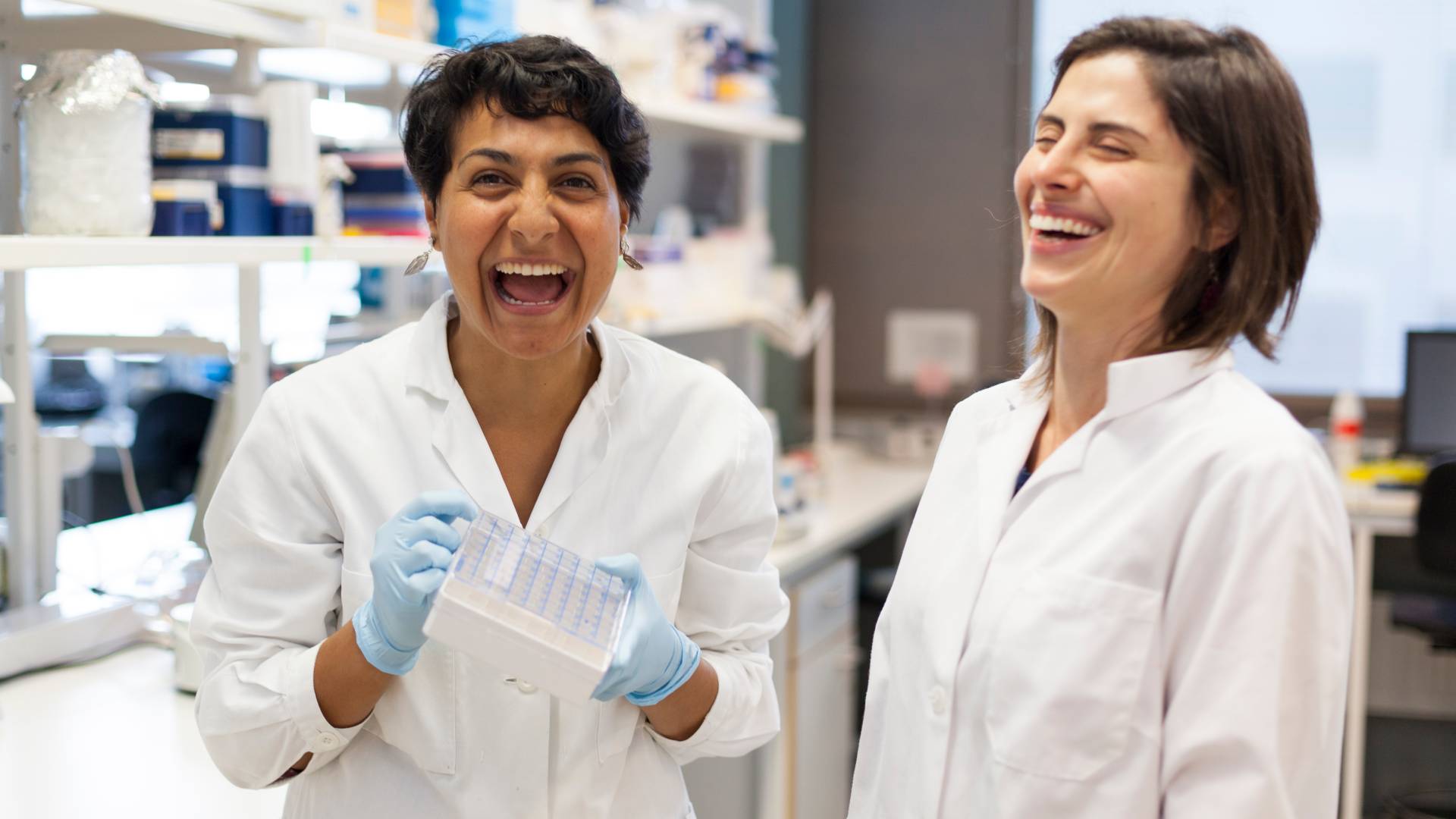The time is now: Celebrating momentum toward human-centered research at the NIH

Earlier this month, the Director of the U.S. National Institutes of Health (NIH), Dr. Monica Bertagnolli, announced that the agency has accepted an advisory group’s recommendations for catalyzing the development and use of novel alternative methods—new nonanimal methods that more accurately model human biology.
These innovative approaches, like tissue chips and computational models, use human cells, tissue, and data to replicate complex patient physiology, improving preclinical predictiveness for better safety and efficacy in drug development.
The group was formed in December 2022 to recommend high-priority areas for NIH investment in these exciting new research approaches. In the words of the group, novel alternative methods hold “tremendous promise for helping us better understand fundamental biology to advance human health” while simultaneously providing potential to reduce or replace the use of animals and to “enable research to be done more quickly, by more researchers, and at a more affordable cost.”
The group’s recommendations lay out a comprehensive plan for the agency to accelerate innovation and uptake of nonanimal methods, including:
- Prioritizing individual and combined methods to model human-relevant complexity;
- Tracking investment in nonanimal methods to identify gaps and support new initiatives (currently, the NIH has no public tracking system for investment in animal- and nonanimal-based research projects);
- Promoting experimental best practices;
- Creating and expanding access to repositories of donated human tissue and cells that are well-characterized, ethically sourced, and representative of patient population diversity (enabling a key advantage of human cell-derived methods: the ability to build insight from human biology, clinical data, and ancestry-specific factors, helping advance personalized medicine and address health disparities in ways that are impossible to do with animals); and
- Investing in comprehensive training in these methods, including training for grant reviewers so that they might better evaluate nonanimal research proposals (acknowledging a well-recognized but newly described phenomenon known as animal methods bias: the unfounded preference for animal-based research, which affects the fair assessment of animal-free studies and project proposals).
This news follows another major step at the agency last month, when a ground-breaking program was greenlit. The Complement Animal Research in Experimentation (Complement-ARIE) program will begin to implement some of these newly accepted recommendations. These efforts build on programs like the decade-old Tissue Chips program led by the National Center for Advancing Translational Sciences and the interagency center that develops and evaluates animal alternatives in toxicology (NICEATM). By refocusing medical research on humans, the NIH will accelerate the capabilities of science and healthcare as we know it. Altogether, this is a watershed moment in the shift toward more human-relevant medical research that doesn’t use animals.
For decades, pressure has been building. The debate has roiled on among government, academic, and industry scientists, lawmakers, and the public, spanning issues related to the scientific limitations of using nonhuman animals to model human diseases; the ethics of using animals in experiments; the emotional toll of working in animal laboratories; and the economic value of nonanimal approaches.
In 2021, a discussion between the NIH and a different advisory group aimed at addressing animal research reproducibility culminated in a recommendation for the NIH to explore how to better support nonanimal research. The reproducibility crisis describes the dismal lack of consistency in experimental results across laboratories. Especially prevalent among animal experiments, this crisis contributes to poor rates of translation from research findings into safe and effective treatments. But as the scientific community increasingly recognizes, improving biomedical research and the therapeutic pipeline requires reproducible experiments and approaches most relevant to humans—ones that utilize human biology rather than that of other animal species.
The NIH is the world’s largest funder of biomedical research, having spent just under $50 billion in Fiscal Year 2023. The scientific and strategic directions of the agency have far-reaching impact in advancing our understanding of human biology, health, and disease, and developing treatments that improve patient outcomes. Support for NIH programs to develop, evaluate, and integrate nonanimal approaches has never been stronger. Complement-ARIE's approval and Bertagnolli’s announcement seem to indicate that institutional inertia is breaking, but a major portion of the NIH’s budget remains entrenched in approaches using animals.
The shift toward human-centered research is up against major structural barriers and additional significant changes at the agency will be needed. The lack of funding, training, and coordinated infrastructure are already acknowledged by the NIH. Complement-ARIE will begin to address them, but greater investment is essential. The program's proposed budget for Fiscal Year 2025 is only $35 million, a far cry from what is needed.
Other barriers, like the systemic resistance to the reduction and replacement of animals in biomedical research, will need to be addressed through high-level agency changes. An agency-wide Strategic Plan for Novel Alternative Methods Research or other long-term priority setting exercise would help the NIH plan and implement programs aimed at improving the relevance of research to humans and reducing animal use. Permanent leadership (like a Director of Novel Alternative Methods Research, for example), along with dedicated staff and a permanent working group could be tasked with overseeing and carrying out these objectives.
Only 5-10% of new drugs pass through clinical trials as safe and effective. Many diseases haven’t seen a single promising pharmaceutical innovation in decades. The U.S. has invested more than $10 billion in Alzheimer’s research in the past ten years, but this heavily animal-reliant effort has yet to yield a clearly safe and effective treatment.
We should all celebrate progress at the NIH, and work to ensure the agency has what it needs to further accelerate the shift toward nonanimal, human-centered approaches in biomedical research. Patients and taxpayers depend on it.
Catharine E. Krebs, PhD, is a medical research program manager with the Physicians Committee for Responsible Medicine, a Washington, DC-based national nonprofit promoting preventive medicine, conducting clinical research, and encouraging higher standards for ethics and effectiveness in research and medical training. She also heads the Coalition to Illuminate and Address Animal Methods Bias, an international collaboration among researchers and advocates aimed at understanding and mitigating the harmful effects of animal methods bias on researchers who use animal-free approaches.







